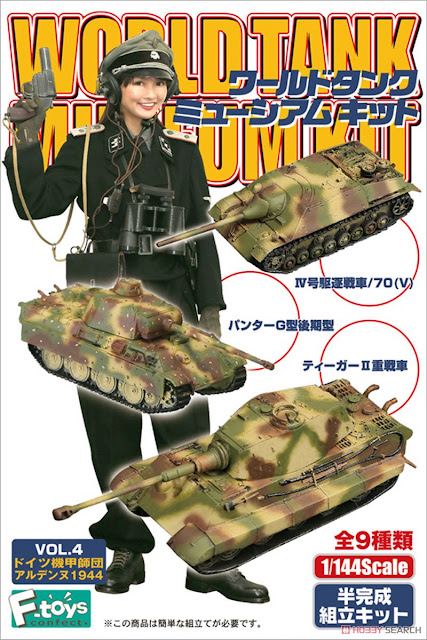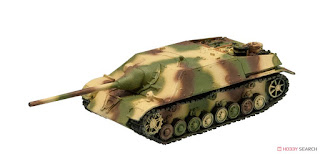MKM14465 1:144 Curtiss P-36 Hawk 'USAAC' (2in1 = 2 kits in 1 box) (USAAC)
The Curtiss P-36 Hawk, the firm's Model 75, was an American-designed and built fighter aircraft of the mid-1930s. Two variants, the P-36A and C, were produced in 1938-39 for the US Army Air Corps, with the production totalling 210 aircraft (last 30 a/c were completed as P-36Cs).
It was a single-seat, all-metal low-wing monoplane with fabric-covered control surfaces. It had a retractable undercarriage with the main landing gear rotated 90° to fold flat into the wing. Powered by a Pratt & Whitney R-1830 Twin Wasp two-row radial engine, it was fitted with Curtiss Electric propeller. The P-36A's armament consisted of two machine guns in the nose, while the P-36C had an additional gun mounted in each wing and was fitted with external ammunition boxes under the wings.
The P-36 saw little combat with the US Army Air Forces during World War II, although a few managed to fight against the attacking Japanese invaders over Pearl Harbor.
Colour schemes included in the kit:
1) Curtiss P-36A Hawk, 48 15P, Black 86, 46th Pursuit Squadron, 15th Pursuit Group, USAAC, Wheeler Field, Oahu, Hawaii, December 1941
2) Curtiss P-36A Hawk, PT 96, 55th Pursuit Squadron, 20th Pursuit Group, USAAC, Barksdale Field, Louisiana, 1940
3) Curtiss P-36A Hawk, 2 15P, 47th Pursuit Squadron, 15th Pursuit Group, USAAC, Haleiwa Fighter Strip, Oahu, Hawaii, December 1941
4) Curtiss P-36C Hawk, Black 69 (Class II experimental camouflage scheme), 27th Pursuit Squadron, 1st Pursuit Group, USAAC, Selfridge Field, Michigan, during National Air Races, Cleveland Airport, Ohio, September 1939
Two injection-moulded kits are supplied in this box and each kit contains 30 parts and four clear parts (the cockpit canopy, rear windows and a landing light).
A comprehensive decal sheet is included.
http://www.hannants.co.uk/product/MKM14465
Available: May 2017
MKM14466 1:144 Curtiss H-75/Mohawk III 'French & British Fighter' (2in1 = 2 kits in 1 box) (French AF, RAF)
The Curtiss H-75 was the export version of the American P-36 Hawk (Curtiss Model 75) fighter of the mid-1930s. The French took delivery of some 330 aircraft, designated the H-75A-1, A-2 and A-3, with the first planes entering service in the spring of 1939. They were modified for French Air Force usage and fitted with different equipment and armament.
The H-75 was a single-seat, all-metal low-wing monoplane with fabric-covered control surfaces. It had a retractable undercarriage with the main landing gear rotated 90° to fold flat into the wing. Powered by a Pratt & Whitney R-1830 Twin Wasp two-row radial engine, it was fitted with Curtiss Electric propeller. The H-75's armament consisted of two machine guns in the nose, and another one (all H-75A-1s and 40 early H-75A-2s) or two guns in each wing (H-75A-3). A small bomb carrier was also mounted under each outer part of the wing.
The Curtiss H-75 was used most extensively and successfully by the French Armée de l'Air during the Battle of France. The H-75s were also ordered by Norway, but did not arrive in time to see action before occupied by Nazi Germany. A number of ex-French aircraft were seized by Germans, some of them were used by the Luftwaffe for pilot training and eventually many sold to Finland, which extensively used them against Soviet forces.
RAF also obtained various H-75s by way of diverted shipments to occupied France or from ex-Norwegian contracts; the H-75A-3 variant was designated the Mohawk Mk.III.
Colour schemes included in the kit:
1) Curtiss H-75A-1, No.16, White 9, 1st Escadrille, GC I/5, French Air Force (Armée de l'Air), Reims airfield, France, summer 1939
2) Curtiss H-75A-1, No.26 (X825), Yellow 2, 2nd Escadrille, GC I/5, French Air Force (Armée de l'Air), Reims airfield, France, autumn 1939
3) Curtiss H-75A-2, No.140 (U040), Black 1, 3rd Escadrille, 2nd Groupe, CIC Fighter Training School, French Air Force (Armée de l'Air), Chartres airfield, France, autumn 1939
Curtiss H-75A-2, No.140 (U040), White 11, 3rd Escadrille, GC II/5, French Air Force (Armée de l'Air), CIC Fighter Training School, Chartres, April/May 1940 and Toul-Croix-de-Metz airfield, France, early June 1940
4) Curtiss Mohawk Mk.III, AR633 (ex-Norwegian H-75A-6 No.481), Grey RG-E, No.510 Sq., RAF, Hendon airfield, U.K., late 1943
Two injection-moulded kits are supplied in this box and each kit contains 29 parts and four clear parts (the cockpit canopy, rear windows and a landing light).
A comprehensive decal sheet is included.
http://www.hannants.co.uk/product/MKM14466
Available: May 2017
MKM14467 1:144 Curtiss H-75 'Foreign Pilots' (2in1 = 2 kits in 1 box) (French AF, Vichy French AF, Finnish AF, Luftwaffe)
The Curtiss H-75 was the export version of the American P-36 Hawk (Curtiss Model 75) fighter of the mid-1930s. The French took delivery of some 330 aircraft, designated the H-75A-1, A-2 and A-3, with the first planes entering service in the spring of 1939. They were modified for French Air Force usage and fitted with different equipment and armament.
The H-75 was a single-seat, all-metal low-wing monoplane with fabric-covered control surfaces. It had a retractable undercarriage with the main landing gear rotated 90° to fold flat into the wing. Powered by a Pratt & Whitney R-1830 Twin Wasp two-row radial engine, it was fitted with Curtiss Electric propeller. The H-75's armament consisted of two machine guns in the nose, and another one (all H-75A-1s and 40 early H-75A-2s) or two guns in each wing (H-75A-3). A small bomb carrier was also mounted under each outer part of the wing.
The Curtiss H-75 was used most extensively by the French Armée de l'Air during the Battle of France and continued in service with the Vichy French after the Armistice.
A number of ex-French aircraft were seized by Germans, some of them were used by the Luftwaffe for pilot training and eventually many sold to Finland, which extensively used them against Soviet forces.
Colour schemes included in the kit:
1) Curtiss H-75A-2, No.125 (U025), White 8, 1st Escadrille, GC I/5, French Air Force (Armée de l'Air), Saint-Dizier airfield, France, June 1940
2) Curtiss H-75A-2, No.183 (U083), 'Red & White Chequer', SNCAC Factory Protection Flight (Patrouille DAT), French Air Force (Armée de l'Air), Bourges airfield, France, May 1940
Curtiss H-75A-2, No.183 (U083), 'Red & White Chequer', Vichy French Air Force (Armée de l'Air de Vichy), Oran-La-Sénia airfield, Algeria, North Africa, summer 1940
3) Curtiss H-75A-2, CU-580 (ex-French No.167), Yellow 0, 1/LeLv 32 (Fighter Sq.), Finnish Air Force (Ilmavoimat), Nurmoila airfield, Finland, autumn 1943
4) Curtiss H-75A-1, Jagdfliegerschule 1 (JFS 1) Fighter Training School, Luftwaffe, Werneuchen airfield, Germany, spring 1941
Two injection-moulded kits are supplied in this box and each kit contains 30 parts and four clear parts (the cockpit canopy, rear windows and a landing light).
A comprehensive decal sheet is included.
http://www.hannants.co.uk/product/MKM14467
Available: May 2017

























































